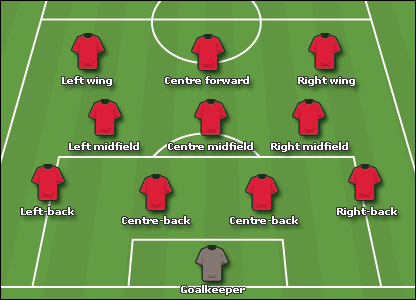
FIFA 14: Best attacking formation
Here, we will take a look at FIFA 14’s best attacking formation. The FIFA franchise has gained a worldwide following due to the sheer realism and the positive aura that it projects to the avid football fan. The game has a vast array of formations for the gamer to choose from. Many prefer to choose a more defensive option to counter the attacking threat of the other team. Some prefer to put more emphasis on their attack, if their defence is reliable. Here, we will take a look at some of the best attacking formations that gamers can employ while, also, not leaking in many goals.
#5. 3-5-2
Being an extremely unconventional formation, it can be employed where a person has three technically proficient and pacey centre-backs who can cover the defensive phase, whether it may be in the middle or on the flanks. They will get support from the wide midfielders who will mainly look to stick to their position and play in a transitional way along the two halves of the field. A midfielder with decent defensive attributes and good passing is a perfect choice. The central part of the midfield will be manned by one attacking midfielder who will mainly receive the ball from the wide positions or from the anchor man in the midfield, who will be the first obstacle for any counter-attack in the midfield. Another midfielder will be in the defensive midfiled position but would like to orchestrate play from there with his vision and creativity, rather than lunging into tackles (eg. Pirlo). The attacking midfielders will act as a support for the two centre-forwards who will run into channels to look for any passes. Basically, this formation involves a narrow style of play but is extremely lethal in the game, especially with reputed teams.
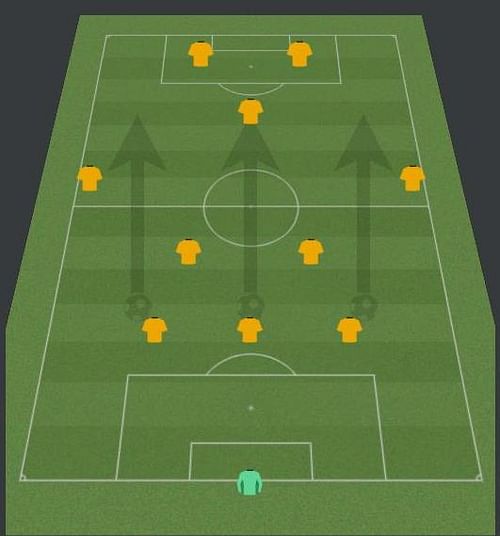
#4. 3-4-3
This formation was used by Johan Cruyff’s successful managerial tenure for The Catalans, FC Barcelona, where he won two successive league titles. His attacking prowess with this formation was such that his team was called the “Dream Team” due to the sumptuous football that they played. Basically, in this formation, two tall centre-backs are employed, one having a small tendency to attack and the other acting as a cover for his opposite number, staying at the back and passing the ball to the midfield. Another player is employed at the back who acts as a sweeper, staying close to the keeper and never roaming from his position. The midfield is a traditional midfield of two wide midfielders and two central midfielders, one of which is a playmaker who will try to get into advanced positions in the final third to support the forward line, which consists of a striker and two wingers who will look to cut inside to score more than crossing the ball for the striker. A definite formation for some exhilarating play if the team has the right players.
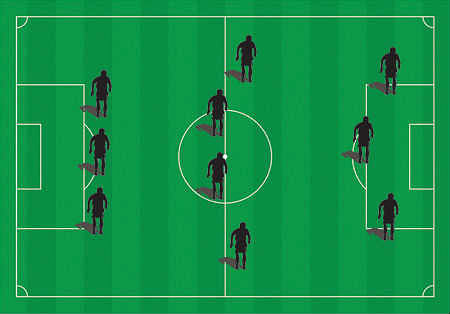
#3. 4-2-4
This is an out-and-out formation which has the probability to get conquered in the midfield, only if the team doesn’t have skilful midfielders in the centre who plays with a certain ease in the area and has the capability to apply pressure to curb opposition’s attacks. This formation has a traditional back four with the full backs being given little freedom to attack till the final third but enough to support the midfield in their role to support their team’s attacks. The final third consists of a striker near the penalty area who is pacey and has good finishing. There is a centre forward who should be comfortable in acting as the focal point for his team’s attacks to hold up play for distributing the ball to the flanks or to his fellow striker. He should also have a decent defensive capability to support the midfield in countering the opposition’s attacks.
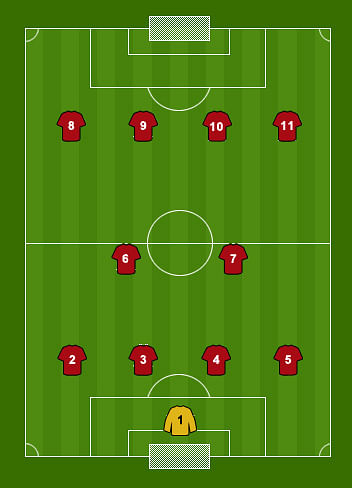
#2. 4-4-2 attack
A widely used formation in reality, the 4-4-2 diamond is a favourite for many gamers as it provides a vital attacking prolificacy and also doesn’t let in many goals. In this formation, the two centre-backs have their roles divided – one acts as a pacey stopper, who also has the aerial prowess to head any ball out to safety or out of their phase, whereas the other centre back acts as a cover, to take over the role of defence when his partner has gone forward. The full backs are pacey, powerful and have a good crossing ability to provide more ammunition to the forward line, by crossing from the touchline or cutting inside to wreak havoc in the opponent’s defence. The midfield has two central midfielders and two wingers. Of the two central midfielders, one acts as the traditional playmaker whereas the other acts a box-to-box midfielder, trusted with transitional play between the two halves (e.g. Ramires). The two wingers are entrusted with the primary role of supporting the forward line and getting the ball into the box or being in advanced forward positions to receive the ball and score themselves.
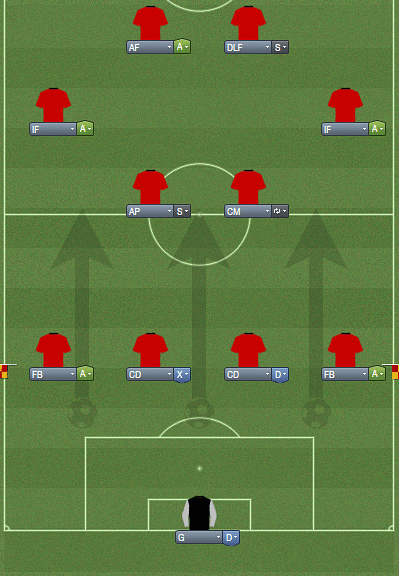
#1. 4-3-3
This formation is probably one of the finest in football as it gives off some extravagant play that can make any manager proud. Sacrificing nothing in the backline while being prolific in the front, this formation basically consists of pacey players with good passing skills. The backline is the traditional back four with two full backs given more of a supporting role rather than an attacking role to cut inside the box themselves. The formation should employ another box-to-box midfielder who can be detrimental in giving his opponent’s chances and instrumental in providing his team chances of their own. Having an advanced playmaker as the second midfielder and a defensive midfielder as the third, the forward line consists of a centre forward who sits in the “hole”, being able to find space in the defensive zone, and another striker, who will receive the ball from the pacey wings or from the tirelessly working centre forward. This striker will rarely like to go back to defend and would also be available to latch onto any long balls from his defenders to set up a counter-attack.
